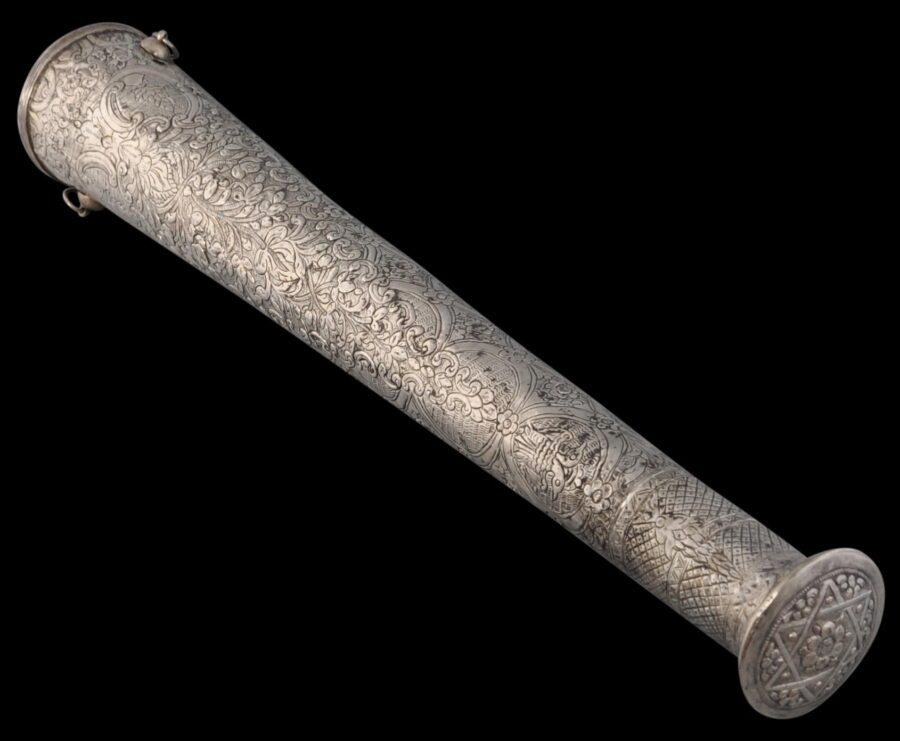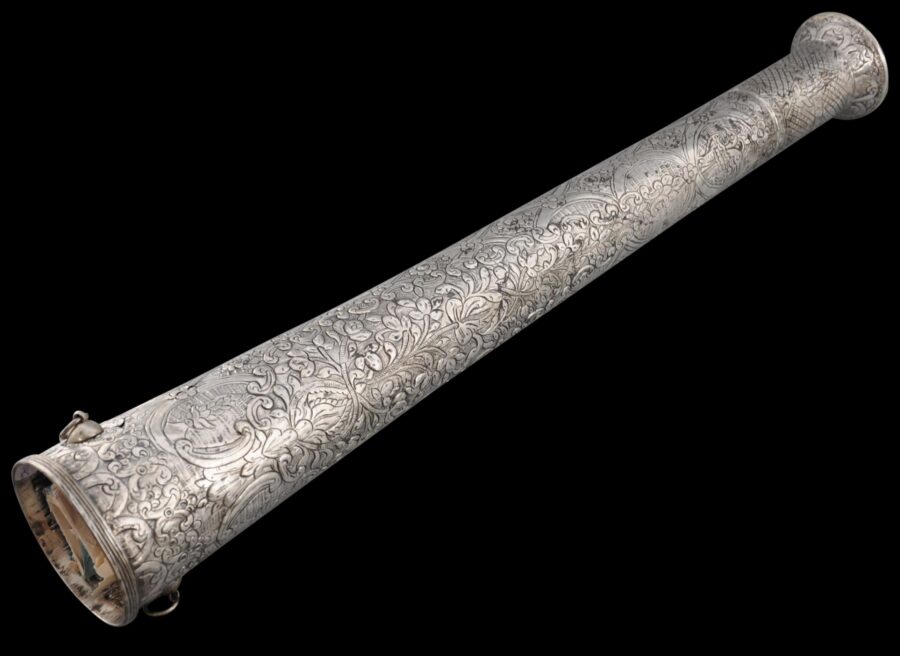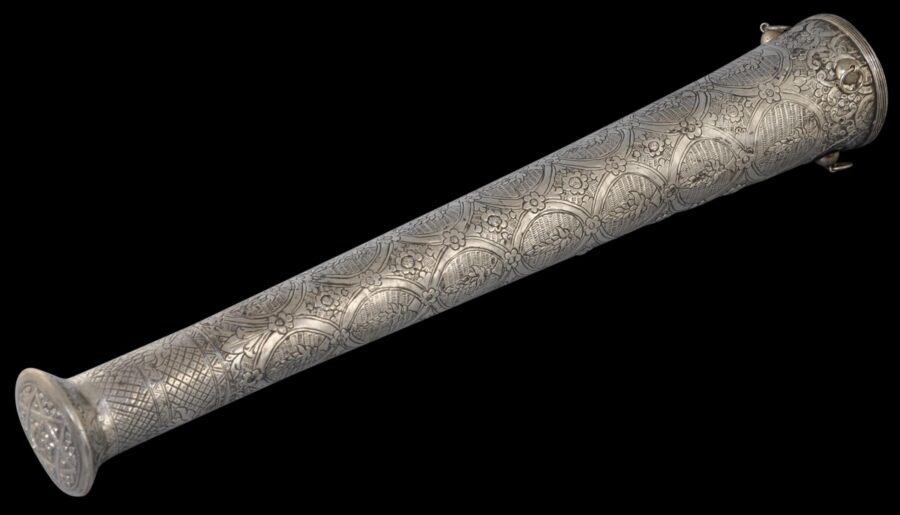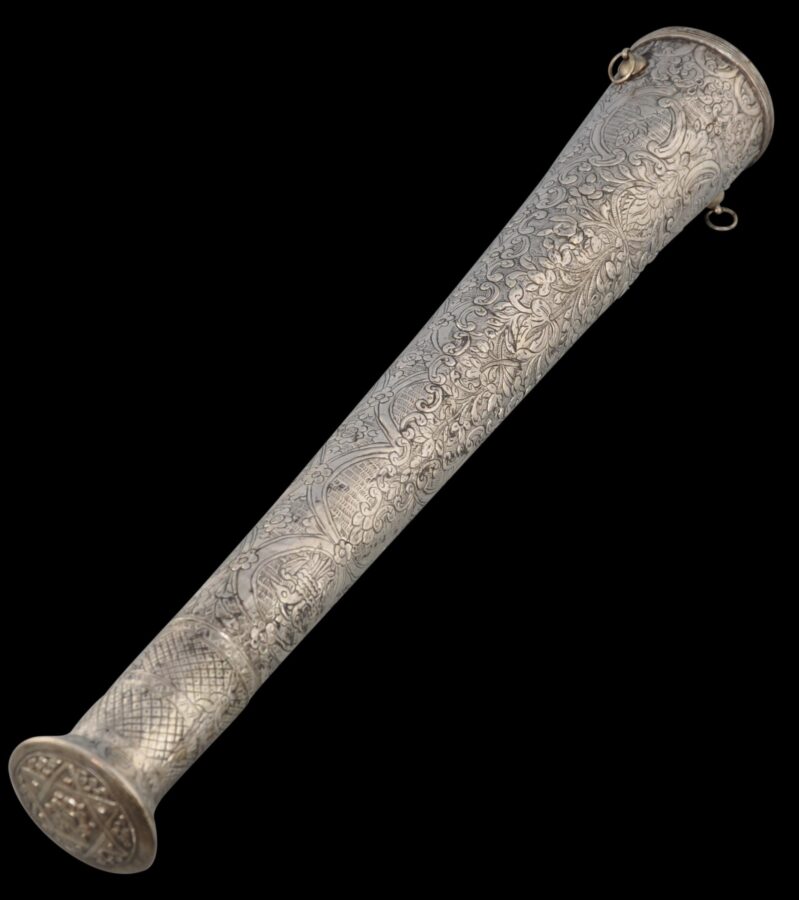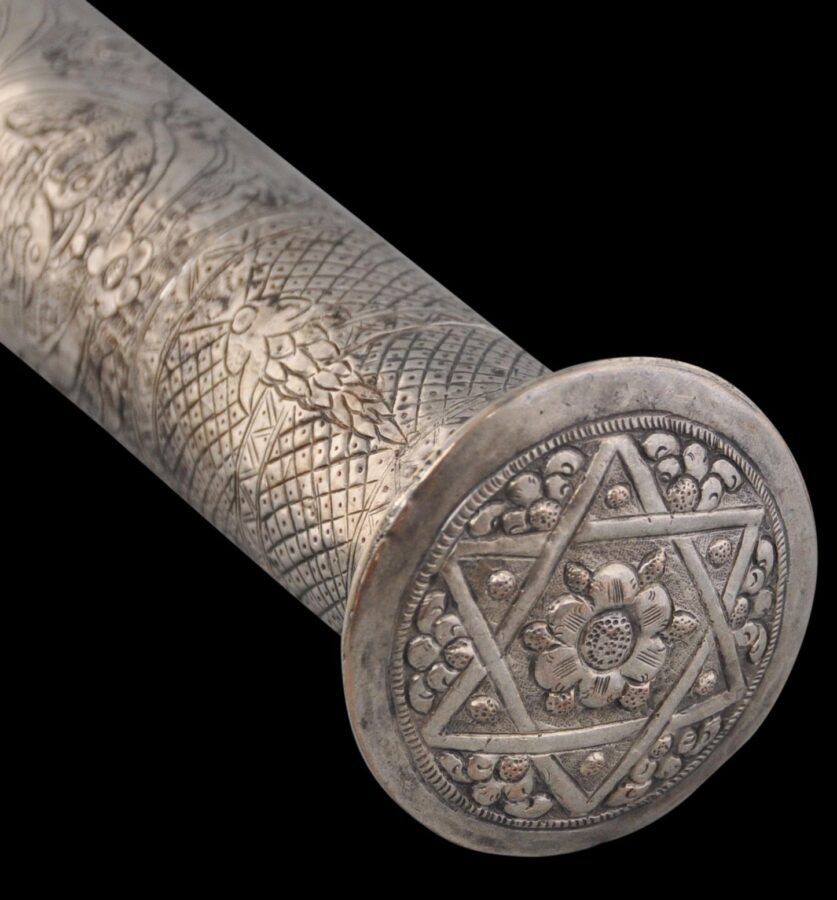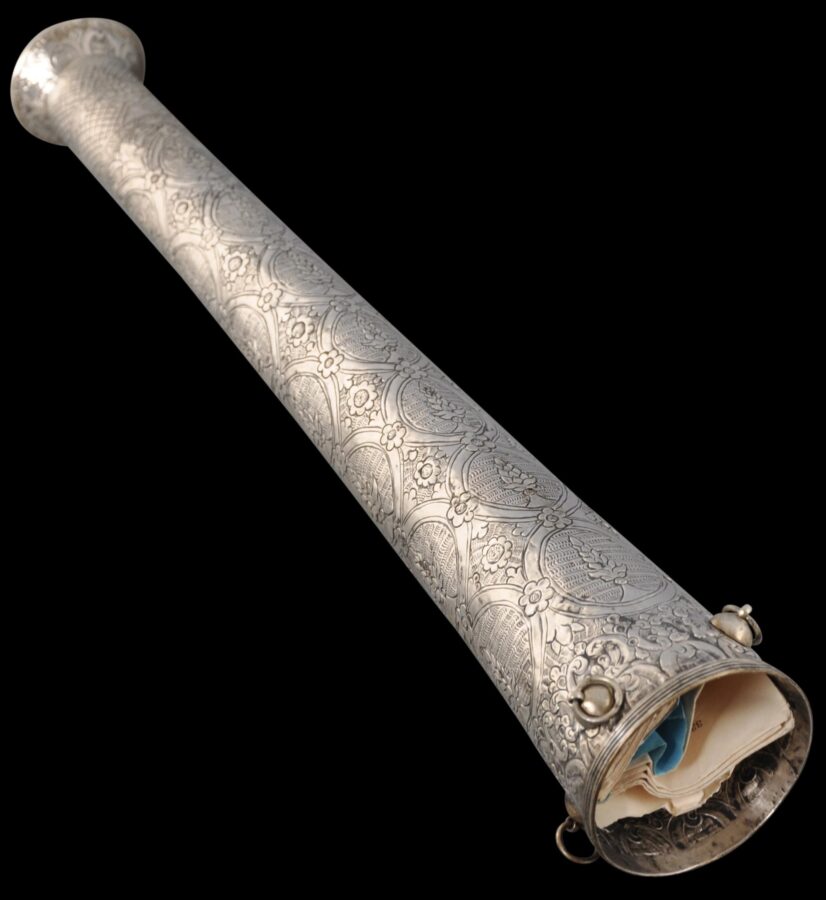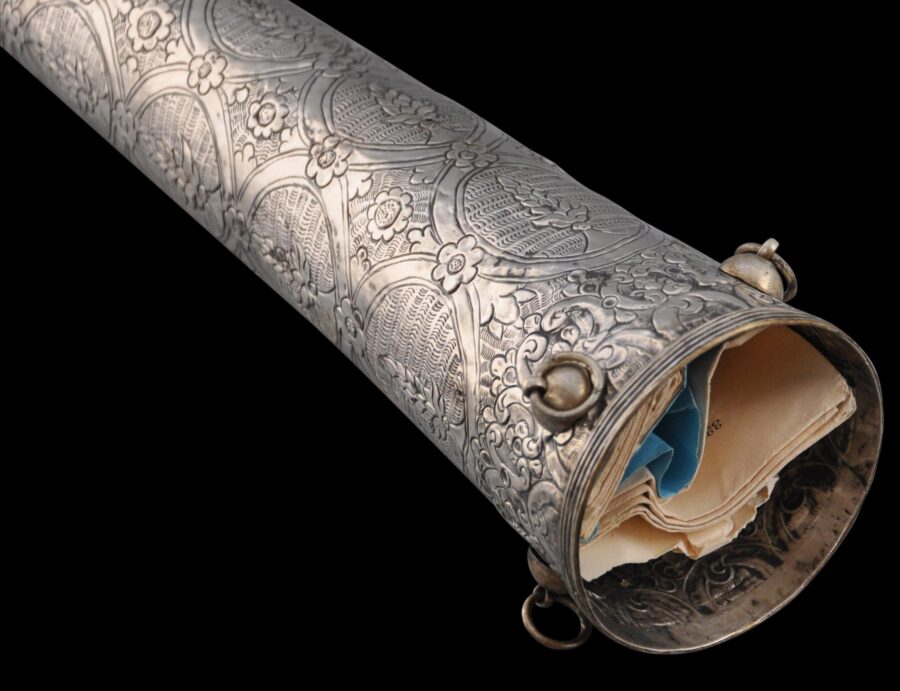This unusual and rare unicorn-like item known as a tantur, was worn as a headdress mostly by Druze women and some Maronite women in the mountain regions of Lebanon. It is tall, conical, and made of engraved, high-grade silver. It tapers to a top that is slightly curved, and engraved with a flower motif surrounded by a petal border. It is the finest example that we have had.
The sides are engraved with scrolling flower and cypress tree motifs and bands of geometric and wavy patterns. A double-headed bird is incorporated into the overall profuse design. The top of the tantur is chased with a six-pointed star within a circle – Solomon’s Seal – and infilled with flower motifs.
The lower rim has three metal studs and rings to allow the headdress to be secured to the head.
It is likely that the silversmiths engraved and chased a flat piece of sheet silver first and it was then rolled into the headdress form, with the join then being pinned and soldered.
Married women wore the tantur fixed to the top of their heads and often with a silk or muslin scarf or veil over the structure which fell to the shoulders. Higher ranked women wore a gold tantur, lower ranked women wore a silver tantur, and those of the lowest ranks wore tanturs made from wood or copper.
Visitors to the mountainous regions of Lebanon reported towards the end of the 18th century that they would be presented by their husbands on their wedding days and that the women who wore tanturs almost never took them off other than to sleep.
The fashion to wear a tantur appears to have largely died out by the 1860s.
Several examples are known in museums around the world including the British Museum, Museum of Applied Arts & Sciences in Sydney, and the Pitt Rivers Museum at the University of Oxford.
The example here is in a fine, stable condition. It has a superb patina and obvious, considerable age. The robustness of the item has been helped over the years by someone having rolled up and an issue of the Church of England’s Scripture Reader’s Journal dated May 1859 and pushed it inside the tantur. The way in which the Journal has deteriorated suggests that it has been rolled up in the tantur since the 19th century. We have elected to keep it in place.
This is an extraordinary and rare relic, and as mentioned, is the finest example that we have had.




